Strange Case Of A Dead Galaxy – What Happened To All The Stars?
MessageToEagle.com – A massive,” dead” galaxy puzzles astronomer who now wonder what happened to all the stars. The case of galaxy MACS 2129-1 is interesting because it challenges our theories of galaxy evolution.
Located about 10 billion light-years away from Earth, MACS 2129-1 is only half the Milky Way’s size, but it’s three times as massive as our home galaxy.
Acting as a “natural telescope” in space, the gravity of the extremely massive foreground galaxy cluster MACS J2129-0741 magnifies, brightens, and distorts the far-distant background galaxy MACS2129-1, shown in the top box. The middle box is a blown-up view of the gravitationally lensed galaxy. In the bottom box is a reconstructed image, based on modeling, that shows what the galaxy would look like if the galaxy cluster were not present. The galaxy appears red because it is so distant that its light is shifted into the red part of the spectrum. Image credit: NASA/Hubble
It is the first example of a compact yet massive, fast-spinning, disk-shaped galaxy that stopped making stars only a few billion years after the Big Bang. Using the Hubble Space Telescope, astronomers have managed to catch a glimpse of this unusual object and they expected to see a chaotic ball of stars formed through galaxies merging together. Instead, they saw evidence that the stars were born in a pancake-shaped disk.
See also:
Why Are Green Galaxies So Rare?
Was Our Solar System Formed By Shock Wave From Exploding Supernova? New Study Supports Old Theory
Milky Way’s Galaxies Are Not What They Seem – We Are All Extragalactic Immigrants – Study Shows
The galaxy, called MACS 2129-1, is considered “dead” because it is no longer making stars. This unusual galaxy surprised astronomers because elliptical galaxies contain older stars, while spiral galaxies typically contain younger blue stars. At least some of these early “dead” disk galaxies must have gone through major makeovers. They not only changed their structure, but also the motions of their stars to make a shape of an elliptical galaxy.
This new insight is forcing astronomers to rethink their theories of how galaxies burn out early on and evolve into local elliptical-shaped galaxies. “Perhaps we have been blind to the fact that early ‘dead’ galaxies could in fact be disks, simply because we haven’t been able to resolve them,” said study leader Sune Toft of the Dark Cosmology Center at the Niels Bohr Institute, University of Copenhagen.
This artist’s concept shows the Milky Way and MACS 2129-1 side by side. MACS 2129-1 is only half the Milky Way’s size, but it’s three times as massive as our home galaxy. (Credit: NASA/ESA/Z.Levy/STScl)
Why this galaxy stopped forming stars is still unknown. It may be the result of an active galactic nucleus, where energy is gushing from a supermassive black hole. This energy inhibits star formation by heating the gas or expelling it from the galaxy. Or it may be the result of the cold gas streaming onto the galaxy being rapidly compressed and heated up, preventing it from cooling down into star-forming clouds in the galaxy’s center.
But how do these young, massive, compact disks evolve into the elliptical galaxies we see in the present-day universe? “Probably through mergers,” Toft said. “If these galaxies grow through merging with minor companions, and these minor companions come in large numbers and from all sorts of different angles onto the galaxy, this would eventually randomize the orbits of stars in the galaxies. You could also imagine major mergers. This would definitely also destroy the ordered motion of the stars.”
MessageToEagle.com
Expand for referencesRelated Posts
-
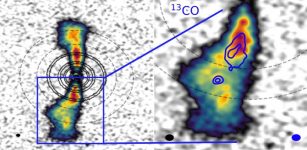 First-Ever Detection Of Gas In A Circumplanetary Disk
No Comments | Aug 10, 2022
First-Ever Detection Of Gas In A Circumplanetary Disk
No Comments | Aug 10, 2022 -
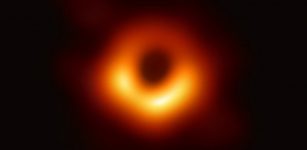 First Photo Of A Black Hole Released – This Giant Monster Is Larger Than Our Entire Solar System!
No Comments | Apr 10, 2019
First Photo Of A Black Hole Released – This Giant Monster Is Larger Than Our Entire Solar System!
No Comments | Apr 10, 2019 -
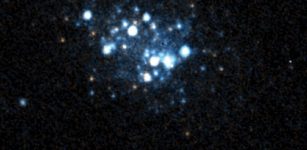 ‘Little Lion’ Galaxy Could Shed Light On Big Bang, New Study
No Comments | May 16, 2016
‘Little Lion’ Galaxy Could Shed Light On Big Bang, New Study
No Comments | May 16, 2016 -
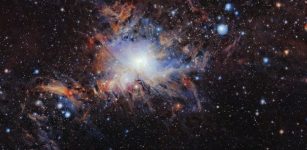 Detailed Maps Of Birthplace Of Stars In Orion A Molecular Cloud
No Comments | May 23, 2018
Detailed Maps Of Birthplace Of Stars In Orion A Molecular Cloud
No Comments | May 23, 2018 -
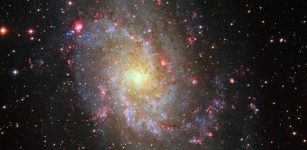 New Dwarf Galaxy Identified By An Amateur Astronomer
No Comments | Nov 18, 2021
New Dwarf Galaxy Identified By An Amateur Astronomer
No Comments | Nov 18, 2021 -
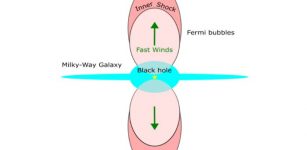 “Fermi Bubbles”: Mysterious Celestial Phenomenon Around Milky Way Is Yet To Be Deciphered
No Comments | Dec 31, 2022
“Fermi Bubbles”: Mysterious Celestial Phenomenon Around Milky Way Is Yet To Be Deciphered
No Comments | Dec 31, 2022 -
 Watch For The Mischievous ‘Demon Star’ This Week
No Comments | Nov 23, 2015
Watch For The Mischievous ‘Demon Star’ This Week
No Comments | Nov 23, 2015 -
 NASA’s InSight Spacecraft Approaches Mars – Landing On Nov 26, Around 20:00 UTC (21:00 CET)
No Comments | Nov 26, 2018
NASA’s InSight Spacecraft Approaches Mars – Landing On Nov 26, Around 20:00 UTC (21:00 CET)
No Comments | Nov 26, 2018 -
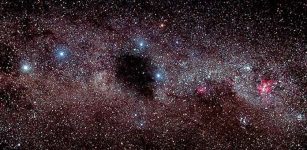 Coalsack Nebula Observed For At Least 40,000 Years: A Cosmic Sackful Of Black Coal
No Comments | Oct 19, 2015
Coalsack Nebula Observed For At Least 40,000 Years: A Cosmic Sackful Of Black Coal
No Comments | Oct 19, 2015 -
 Soyal: Hopi Indians’ Winter Solstice Celebration And Arrival Of The Katchinas
No Comments | Nov 24, 2016
Soyal: Hopi Indians’ Winter Solstice Celebration And Arrival Of The Katchinas
No Comments | Nov 24, 2016


